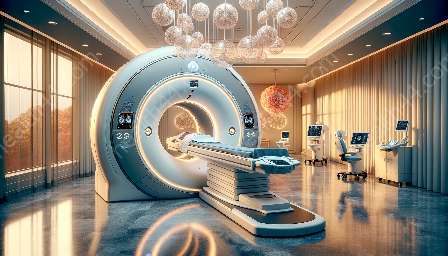Infusion pumps play a crucial role in modern healthcare, delivering fluids, medications, and nutrients into a patient's body in controlled amounts. These devices are compatible with medical imaging devices and are an integral part of the extensive range of medical devices and equipment used in clinical settings.
Let's dive into the fascinating world of infusion pumps, exploring their functionalities, compatibility with medical imaging devices, and significance in the broader landscape of medical equipment.
The Basics of Infusion Pumps
Infusion pumps are medical devices used to deliver fluids such as medications, nutrients, and blood products into a patient's body in controlled amounts. They are commonly used in clinical settings, including hospitals, clinics, and home care environments. By regulating the flow rate and volume of fluids, infusion pumps enable medical professionals to administer precise and accurate doses to patients.
Types of Infusion Pumps
There are several types of infusion pumps, each designed to accommodate specific clinical needs. The main categories of infusion pumps include:
- Volumetric Infusion Pumps: These pumps deliver fluids at a predetermined rate, commonly used for medications and IV fluids.
- Syringe Infusion Pumps: These pumps use syringes to administer small volumes of medication at a controlled rate, making them suitable for delivering potent drugs in precise doses.
- Patient-Controlled Analgesia (PCA) Pumps: These pumps allow patients to self-administer pain medication within preset limits, empowering them to manage their pain under medical supervision.
- Enteral Infusion Pumps: Designed specifically for delivering nutrition and medications directly into the stomach or intestine, enteral pumps are essential for patients who cannot consume food or medications orally.
- Insulin Infusion Pumps: These pumps are used by individuals with diabetes to deliver a continuous and precise flow of insulin, mimicking the function of a healthy pancreas.
Compatibility with Medical Imaging Devices
Infusion pumps are intricately linked with the world of medical imaging devices, forming an essential part of the comprehensive medical equipment landscape. In many clinical scenarios, patients undergoing imaging procedures such as MRIs or CT scans may require the administration of contrast agents or other fluids via infusion pumps. Additionally, infusion pumps are often utilized alongside medical imaging devices in critical care settings, ensuring that patients receive the necessary medications and fluids during diagnostic procedures.
Integration with Medical Imaging Systems
The compatibility of infusion pumps with medical imaging devices is paramount for seamless patient care. Medical professionals rely on the synchronized operation of infusion pumps and imaging systems to provide patients with optimal care during diagnostic and interventional procedures. By integrating infusion pumps with medical imaging systems, healthcare providers can maintain precise control over the delivery of fluids, medications, and contrast agents, enhancing the safety and efficiency of diagnostic processes.
Significance within Medical Devices and Equipment
As part of the broader landscape of medical devices and equipment, infusion pumps hold significant importance in supporting various aspects of patient care. Their compatibility with medical imaging devices reinforces their role as indispensable tools for delivering targeted therapy and essential fluids in conjunction with imaging-guided procedures.
Advancements in Infusion Pump Technology
The evolution of infusion pump technology has led to the development of innovative features that enhance safety, accuracy, and user interface designs. Modern infusion pumps are equipped with advanced capabilities such as wireless connectivity, smart alarms, and integration with electronic medical records (EMR) systems, paving the way for more efficient and secure clinical workflows.
Using Infusion Pumps in Medical Imaging Modalities
Medical imaging modalities, including ultrasound, MRI, CT scans, and X-rays, often rely on infusion pumps to facilitate the administration of contrast agents and other fluids essential for diagnostic and interventional procedures. This synergy between infusion pumps and medical imaging modalities exemplifies the interdisciplinary nature of modern healthcare, where the seamless coordination of diverse medical devices is paramount for comprehensive patient management.
Embracing the Future of Infusion Pumps in Healthcare
The role of infusion pumps as essential components of modern healthcare continues to evolve, driven by ongoing advancements in technology and the increasing integration of medical devices. As patient care becomes increasingly personalized and data-driven, infusion pumps are poised to play an even more integral role in delivering precise and targeted therapies, supported by seamless compatibility with medical imaging devices and other critical equipment.
By understanding the versatility and importance of infusion pumps within the broader context of medical devices and equipment, healthcare providers and industry professionals can further optimize the delivery of care and enhance patient outcomes.


